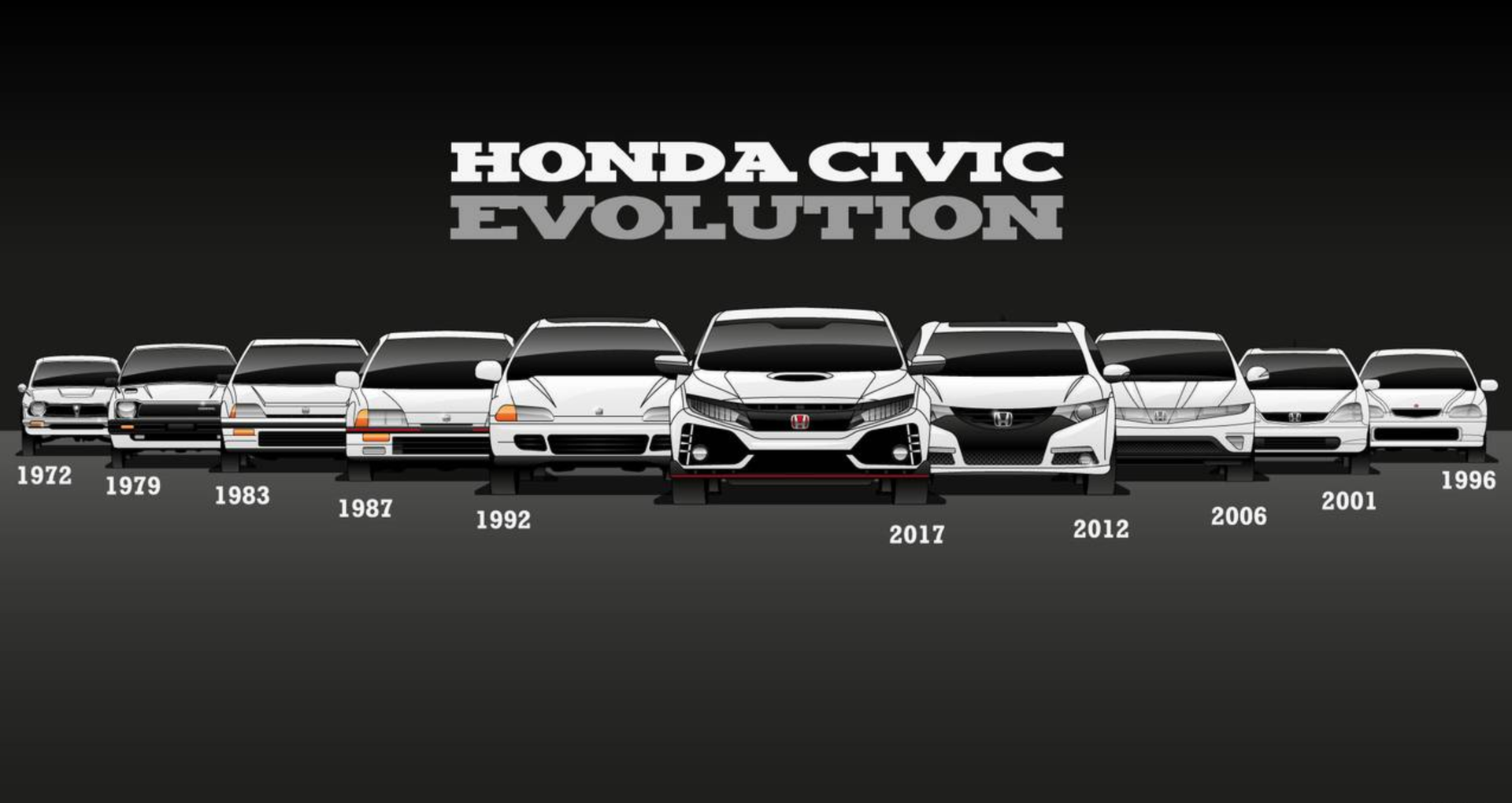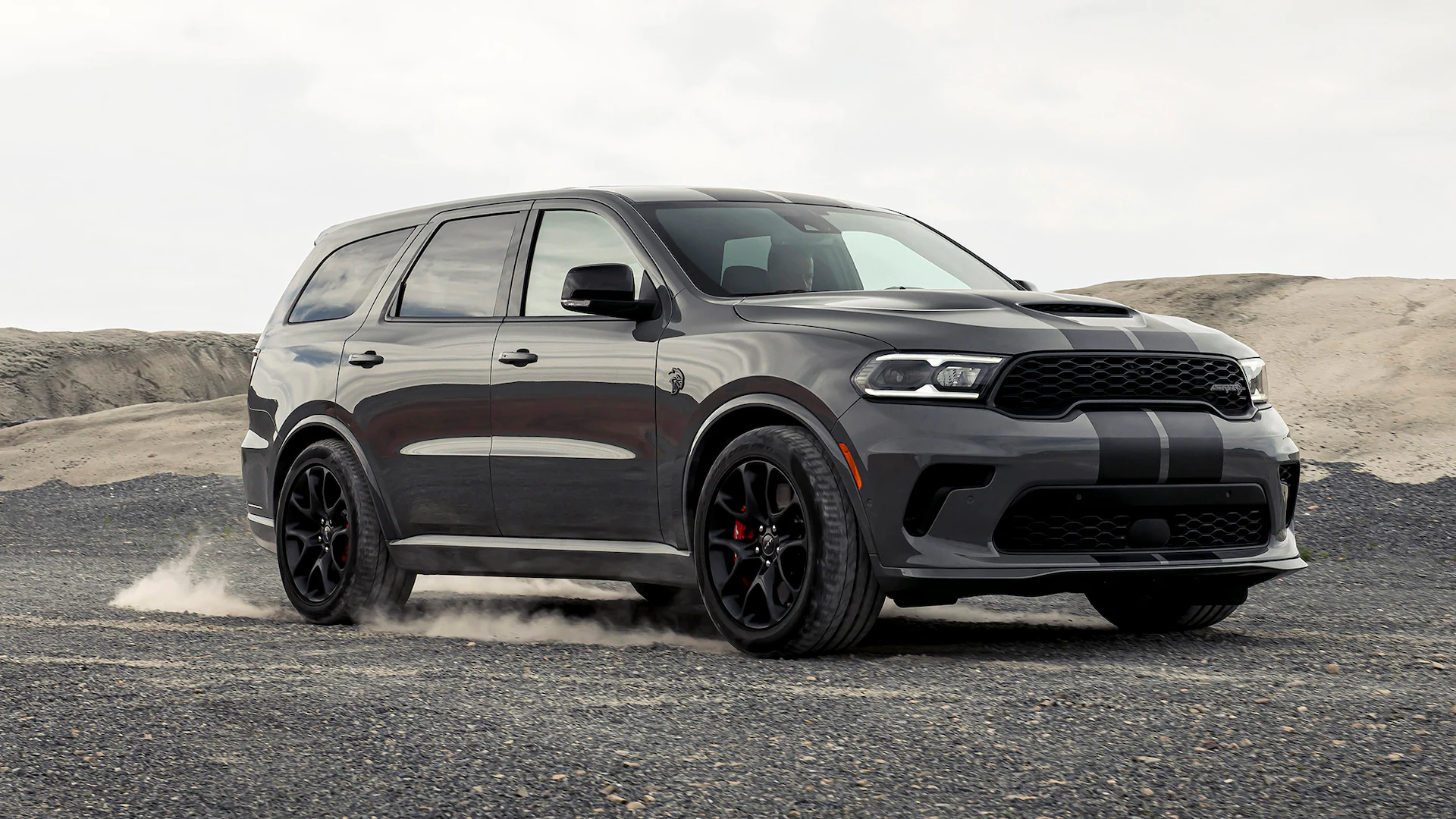Introduction
It’s cheap, it’s good on gas, it’s got great aftermarket support, it’s tunable, it’s got 4 doors and it holds its value well. It’s the greatest car of all time – it’s the Honda Civic.
No matter who you are or what your opinion of Honda may be, you’ve got to admit that the Civic is a great car. I’d go as far as saying that it is one of the most successful cars of all time. Whether we’re talking about present day, 10 years ago, 20 years ago, 30 years ago, 40 years ago, and maybe even 50 years ago; the civic was always there. Throughout my entire life, it has always been easy to find a Civic, because they are everywhere.
The Civic has managed to remain popular over nearly half a century because of its legendary reliability, low price, amazing efficiency and ability to maintain it’s value. Though its ability to maintain its value is likely a by product of its other great qualities.
Throughout this process it has managed to become an integral part of car culture. Sure, it spends most of its time being on the receiving end of many, many jokes (cue the lawnmower sound effects), but nonetheless it remains relevant. This is because despite the hate it gets, it is still a great entry level car. It’s easy to modify and cheap, making it an ideal first car for enthusiasts who are just getting started.

There are memes about the Civic that are older than children today! The earliest appearance of the Civic in car culture that I can remember is in the first Fast & Furious movie. If you don’t share the same weird hyper-fixation on the movies that I do, allow me to jog your memory. The Civic appears in the early scenes of the movie robbing a semi-truck, and we do see them several more times. We also see Hector order three T66 turbos with NOS and a Motec Exhaust system.


While the Civic has seen it’s fair share of jokes, it also does get respected in some instances. For example, the “Civic with a laptop” seems to be equally feared and respected by all car enthusiasts.

But where did the tail of this automotive legend begin?
Origins
Of course, there would be no Honda Civic without Honda. Honda was founded and created in 1946 by Soichiro Honda in a small town named Hamatsu (located in Japan of course). Before we dive into the tale of the Civic, please allow me to give you some rather interesting information about Honda.

Honda is worlds largest manufacturer of motorcycles and internal combustion engines (measured per unit). Honda didn’t even produce their first car until the year 1963, which is 17 years after the company’s creation. Soon after this we arrived at the 1973 Oil Crisis where the price of oil rose by almost 300%, which subsequently caused the price of fuel to then rise as well.
During this time people became obsessed with finding the most fuel-efficient cars possible to save money on gas. Coincidentally, the Civic also made it’s first appearance in 1973, featuring a Compound Vortex Controlled Combustion (CVCC) engine. This engine allowed for far more efficient combustion than others and was also able to run on either unleaded or leaded fuel. This gave drivers far more flexibility than other automobiles were at the time, while also being fuel efficient during the Oil Crisis.

As you can likely imagine, the first generation Civic was an immediate hit! It was debuted in Japan in 1972 and began selling in 1973. In addition to its CVCC engine, it also had quite a few other interesting tricks up it’s sleeve that made it very appealing.

It was the first Japanese car to have something similar to European styling that made it look far more expensive than it was. This styling was quickly copied by other Japanese brands: the Mazda Familia AP, Daihatsu Charade and Mitsubishi Mirage are a few notable examples.
The Civic also featured a transverse mounted front engine and front wheel drive system (read my article about drivetrains here). This platform was quickly copied by several other auto manufacturers. The 1974 Volkswagen Golf, 1976 Ford Fiesta and 1978 Fiat Ritmo all copied the Civic’s styling and drivetrain.


The first generation Civic also came in a few different configurations. You could get it as a 2 or 4 door sedan, or a 3 or 5 door hatchback, or a 3 or 5 door wagon. But I think the big takeaway from this section is that the first generation of the Civic only took 1 year to make an impact on the automotive industry. Not going to name any names here, but some manufacturers still haven’t made a lasting impact on the industry.
Generations
The second generation of the civic debuted in 1979 and began selling in 1980. This generation featured a new design, more power and three transmission options: a four-speed manual, five speed manual and a two-speed semi automatic called the HondaMatic.
The HondaMatic transmission had only two gears and did not shift automatically, but you wouldn’t need to use a clutch. You could just shift the gear lever from first to second, and because of its torque converter you could actually drive entirely in second gear (read my article and check out my video about Torque Converters).

The third generation civic debuted in 1983 and began selling in 1984. This was a pretty important generation for the Civic because it introduced a lot of cool things. This was the first generation of the Civic to use the D series engine. We also saw the debut of the Si and CRZ Si in 1984.
We saw a 4WD system introduced to the Civic, which I think is wild (read my article about drivetrains here). It began as an optional 4WD system that could be activated by pushing a button and then switched to the “Realtime” system that would automatically engage when the front wheels lost traction.
A new gear was added to the transmission called “Super Low” or “SL” to now make it a six speed. This gear was built to provide more torque at low speeds, which we all know Honda’s need. Finally, the Ballade was created in South Africa as a part of the third generation (read my article and check out my YouTube video about the Ballade here).

The fourth generation was released in 1987, and while it didn’t bring in as many changes as the third generation, it still is impressive. Here we saw the introduction of the B16 (and B16A in the SiR for the Japanese market) as well as electronic fuel injection. During this generation Honda started using their new plant in Alliston, Ontario to produce cars.

The fifth generation debuted in 1991 and began selling in 1992. Unfortunately, this is the generation where the Civic wagon became exclusive to the Japanese market – a fact that still bothers car enthusiasts to this day.
However, it’s not all doom and gloom with this generation, we witnessed the introduction of the godly technology known as VTEC. This is also the generation that the AMG Ballade was born from (read my article and check out my YouTube video about the AMG Ballade here), along with the Civic Coupe (RIP).

The sixth generation of the Civic debuted in 1995 and began selling in 1996. Here we saw the introduction of the Si coupe and I believe that this is the generation of the Civic that was used in Fast & Furious 1. Finally, this generation also introduced the first Civic Type R (though exclusively to Japan).

The seventh generation debuted in 2000 and began selling in 2001. The Civic grew during this generation, its interior space was increased and the Civic jumped from a sub-compact to a compact car. We saw the introduction of the legendary K series motor in this generation as well. Here the Civic started to look more like the modern Civic’s that we know.

The eighth generation Civic debuted in 2005 and began selling in 2006, it looked quite modern for the time. This was a big generation for the Si, here is where it really started to gain some respect and became loved by a lot of car enthusiasts. We also witnessed the creation of the legendary Mugen Si.

The ninth generation debuted in 2011 and began selling in 2012. Interestingly, this generation was never sold In Japan except for 750 Civic Type R units in 2015. This generation was developed during the 2008 financial crisis and Honda decided to focus on fuel efficiency and affordability rather than the design and quality. Honda paid dearly for this and was forced to perform a facelift on the models in 2013.

The tenth generation debuted in 2015 and began selling in 2016. This generation featured dramatically new exterior styling to help them recover from their stumble in the previous generation. I personally liked the styling but nearly everyone had a love hate relationship with it.
This generation saw the release of the Civic Type R in North America and was unfortunately the last generation to offer a Civic coupe. But perhaps the silver lining is that we also saw the return of the Civic hatchback to North America.

Present Day
So far, we’ve spoken about the origins of the Civic, and the generations it has been through since then, but where is the Civic today? That brings us to the eleventh generation, this generation debuted in 2020/2021 and began selling in 2022.
This generation looks much more modern, refined and matured than the previous tenth generation (though it does really look like the Audi A3, read my article and check out my video about automotive copycats). We saw a luxury bump across all the models, I am particularly impressed with the Si of this generation.

On the Canadian spec, heated seats and steering wheel, a 12 speaker Bose sound system, limited slip differential and Honda’s full suite of safety tech is standard. That is quite an impressive package for such a cheap (well, relatively cheap anyways) car, I think it’d make for the perfect daily (read my full article about the 11th Gen Civic Si here).
The Civic Type R of this generation is also nothing to scoff at either. It currently holds the fastest lap time of any front wheel drive car on the Nürburgring, ever. This is no small feat, and I think it serves as a testament to Honda’s resilience and commitment.

Over the years Honda stayed committed to the front wheel drive platform, they could’ve jumped to all wheel drive like nearly every other company did, but they chose to stay true to their roots. And the fruits of their labour are clearly visible, no other manufacturer’s front wheel drive vehicles can even touch the Civic Type R on the track.
Today, Honda remains a major player in both the automotive industry and car culture. You can’t drive more than 10 minutes without seeing a Honda on the road, and you also can’t scroll through social media for more than 10 minutes without seeing something related to Honda (assuming you’re a car enthusiast).
It’s pretty crazy that over the course of nearly half a century, the Civic hasn’t just remained relevant – it’s remained a major player in car culture.
Research Sources: Honda Civic Wikipedia, HondaMatic Wikipedia, Car and Driver, MotorTrend, Driving.ca, Honda Wikipedia, Honda, Oil Crisis Wikipedia
Image Sources: 11th Gen Civic Forum, Wikipedia, Investopedia, LinkedIn, Drew Peacock, Movie Car Chases HD, Volkswagen Newsroom, Reddit, Motor1.com



